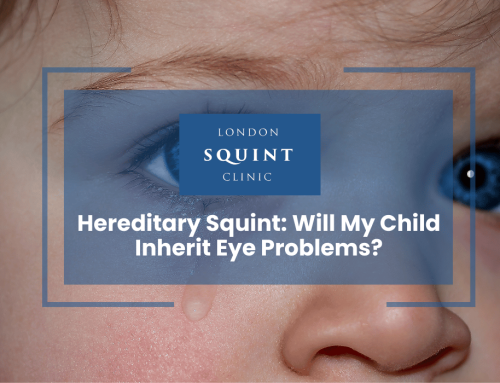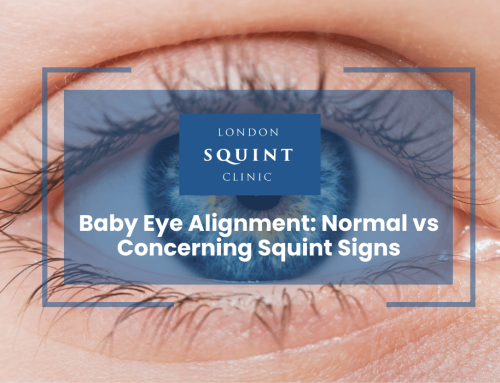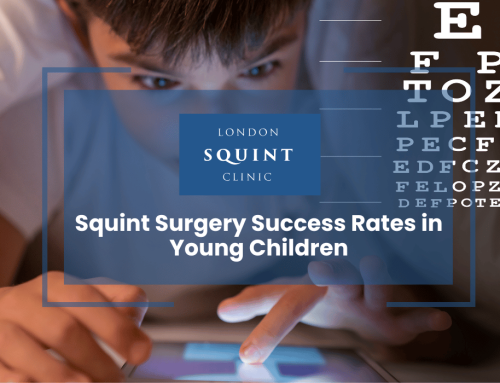Non-Surgical Squint Treatment Options for Children
Essential Insights for Parents: Non-Surgical Squint Management
Early intervention is crucial: The first 7-8 years of life represent the critical period for visual development, making prompt diagnosis and treatment essential for preventing permanent vision problems.
Non-surgical options are often effective: Prescription glasses, vision therapy, and patching can successfully treat many types of childhood squint, particularly accommodative esotropia and intermittent squints.
Combined approaches yield best results: Integrating multiple treatment strategies (glasses, exercises, patching) typically produces superior outcomes by addressing both optical and neuromuscular components of squint.
Consistency is key to success: Regular use of prescribed glasses, faithful adherence to patching schedules, and persistent practice of vision exercises significantly improve treatment effectiveness.
Progress requires patience: Improvement is typically gradual rather than immediate, with most non-surgical treatments requiring 3-6 months or longer to achieve optimal results.
Table of Contents
- Understanding Childhood Squint: Causes and Types
- When Can Squint Be Treated Without Surgery?
- Prescription Glasses: A Primary Treatment for Childhood Squint
- Eye Exercises and Vision Therapy for Improving Eye Alignment
- Patching Treatment: Managing Amblyopia in Squint Cases
- Combining Treatment Approaches for Optimal Results
- Monitoring Progress: What Parents Should Expect
- When to Consider Surgical Options for Childhood Squint
Understanding Childhood Squint: Causes and Types
Squint (strabismus) affects approximately 2-4% of children in the UK and is characterised by misalignment of the eyes, where one eye turns inward, outward, upward, or downward while the other focuses straight ahead. Understanding the specific type and cause of your child’s squint is crucial for determining the most appropriate non-surgical treatment approach.
The main types of childhood squint include:
- Accommodative esotropia: An inward-turning squint triggered by focusing efforts, often associated with long-sightedness (hyperopia)
- Intermittent exotropia: An outward-turning squint that comes and goes, often worse when the child is tired or unwell
- Congenital squint: Present from birth or developing within the first six months of life
- Sensory squint: Resulting from poor vision in one eye
Causes of childhood squint vary widely and may include refractive errors (need for glasses), muscle control problems, or neurological issues. Some children develop squint due to significant differences in vision between the two eyes, while others may have a family history of the condition. Early identification of the underlying cause is essential for effective non-surgical management and preventing the development of amblyopia (lazy eye), which can permanently affect vision development if left untreated during the critical visual development period.
When Can Squint Be Treated Without Surgery?
Many parents ask, “Can squint be treated without surgery in children?” The answer is yes, in many cases. Non-surgical squint treatment options are particularly effective for certain types of squint, especially when identified and addressed early in a child’s visual development.
Squint conditions most responsive to non-surgical approaches include:
- Accommodative esotropia, where glasses can often fully correct the eye alignment
- Intermittent squints that occur only occasionally
- Squints associated with significant refractive errors (need for glasses)
- Early-stage squints before eye muscles have established fixed patterns
The critical period for visual development occurs during the first 7-8 years of life, making early intervention essential. Non-surgical treatments are typically considered first-line approaches for children under age 4, as their visual system remains highly adaptable. For older children, the decision between surgical and non-surgical options depends on multiple factors including squint type, severity, duration, and previous treatment responses.
A comprehensive eye examination by a paediatric ophthalmologist is necessary to determine if your child’s squint can be managed without surgery. This assessment evaluates visual acuity, refractive errors, eye movement patterns, and binocular vision function to create a personalised treatment plan. Understanding the specific characteristics of your child’s squint is the first step toward successful non-surgical management.
Prescription Glasses: A Primary Treatment for Childhood Squint
Prescription glasses represent one of the most effective non-surgical squint treatments for children, particularly for accommodative esotropia (inward-turning squint related to focusing efforts). When a child has uncorrected long-sightedness (hyperopia), they must exert extra focusing effort to see clearly, which can trigger excessive convergence of the eyes and result in a squint.
The mechanism by which glasses help correct squint includes:
- Reducing the focusing effort required for clear vision
- Correcting refractive errors that contribute to eye misalignment
- Balancing vision between both eyes when significant differences exist
- Incorporating prism lenses when necessary to align images from both eyes
For many children with accommodative squint, wearing the appropriate prescription can completely resolve the eye misalignment within weeks or months. In cases of partially accommodative squint, glasses may significantly improve alignment even if they don’t achieve perfect correction. Special considerations for children’s glasses include impact-resistant lenses, secure fit, and child-friendly frames to ensure consistent wear.
Bifocal or progressive lenses may be prescribed for some children with specific types of esotropia that worsen during near vision tasks. Additionally, some children benefit from prism glasses, which bend light to compensate for eye misalignment, helping the brain receive properly aligned images from both eyes and potentially strengthening binocular vision development.
Eye Exercises and Vision Therapy for Improving Eye Alignment
Eye exercises and structured vision therapy programmes represent valuable non-surgical approaches for treating certain types of squint in children. These techniques, typically administered by orthoptists or specialised optometrists, aim to improve eye muscle coordination, strengthen binocular vision, and enhance the brain’s ability to use both eyes together effectively.
Common vision therapy techniques for squint include:
- Convergence exercises: Training the eyes to turn inward properly for near vision tasks
- Divergence exercises: Helping the eyes maintain proper alignment for distance viewing
- Fusion training: Teaching the brain to combine images from both eyes into a single, three-dimensional perception
- Eye tracking activities: Improving the ability to follow moving objects smoothly with both eyes
- Visual stimulation techniques: Enhancing visual processing and eye-brain coordination
Vision therapy is particularly effective for intermittent exotropia (outward-turning squint), convergence insufficiency, and certain forms of accommodative squint. The exercises are customised to the child’s specific condition and typically performed both in clinical sessions and as home-based activities to reinforce progress.
For optimal results, consistency is crucial. Most vision therapy programmes require 3-6 months of regular practice, with sessions typically lasting 15-30 minutes several times weekly. While not effective for all types of squint, eye exercises can significantly improve alignment and visual function in carefully selected cases, potentially reducing or eliminating the need for surgical intervention.
Patching Treatment: Managing Amblyopia in Squint Cases
Patching treatment, also known as occlusion therapy, is a critical component of non-surgical squint management when amblyopia (lazy eye) is present. Amblyopia frequently develops in children with squint as the brain begins to suppress visual input from the misaligned eye to avoid double vision, resulting in reduced visual development in that eye.
The patching process involves:
- Covering the stronger eye with an adhesive patch or optical occlusion
- Forcing the brain to process visual information from the weaker eye
- Gradually strengthening visual pathways and improving vision in the affected eye
- Following a prescribed schedule based on the severity of amblyopia
The duration and intensity of patching treatment vary depending on the child’s age, the severity of amblyopia, and treatment response. For moderate amblyopia, 2-4 hours of daily patching may be sufficient, while severe cases might require 6 hours or more. Younger children typically respond more quickly to patching due to greater neuroplasticity in their developing visual system.
Parents often ask, “How long does patching treatment take to work?” While some improvement may be noticeable within weeks, complete treatment typically requires 3-6 months or longer. Regular monitoring by an ophthalmologist or orthoptist is essential to adjust the patching regimen as needed and prevent potential side effects such as skin irritation or temporary reverse amblyopia in the patched eye.
For children who cannot tolerate traditional patching, alternatives include Bangerter filters (translucent filters applied to spectacle lenses) or atropine eye drops, which blur vision in the stronger eye to achieve a similar therapeutic effect.
Combining Treatment Approaches for Optimal Results
The most effective non-surgical squint treatment plans often involve a combination of approaches tailored to address the specific characteristics of a child’s condition. By integrating multiple therapeutic strategies, ophthalmologists can target different aspects of visual function simultaneously, potentially achieving better outcomes than single-modality treatment.
Common combination approaches include:
- Prescription glasses with patching therapy for accommodative squint with amblyopia
- Vision therapy exercises alongside corrective lenses to enhance binocular vision
- Prism glasses combined with orthoptic exercises for certain types of intermittent squint
- Sequential treatments that build upon previous progress (e.g., correcting refractive errors first, then addressing residual misalignment)
The synergistic effect of combined treatments often produces superior results by addressing both the optical factors (through glasses) and neuromuscular components (through exercises or patching) of squint. For instance, a child with partially accommodative esotropia might wear glasses to correct the refractive portion of their squint while simultaneously performing convergence exercises to improve eye muscle coordination.
Treatment plans are typically staged, with regular assessments to evaluate progress and adjust interventions accordingly. This dynamic approach allows for personalisation based on the child’s response, developmental stage, and changing visual needs. The ophthalmologist and orthoptist work closely with parents to ensure treatment adherence and modify strategies as needed to maximise effectiveness while minimising disruption to the child’s daily activities.
Monitoring Progress: What Parents Should Expect
Consistent monitoring is essential for successful non-surgical squint treatment in children. Parents should understand what constitutes progress, how it’s measured, and the typical timeline for improvement to maintain motivation during what can sometimes be a lengthy treatment process.
Key aspects of monitoring squint treatment progress include:
- Regular follow-up appointments (typically every 2-3 months initially)
- Visual acuity measurements to track improvements in the affected eye
- Assessment of eye alignment using prism cover tests and other specialised techniques
- Evaluation of binocular vision function and stereopsis (3D vision) development
- Adjustments to glasses prescriptions as the child grows and vision changes
Parents should expect gradual rather than immediate improvement. For accommodative squint treated with glasses, some children show alignment improvement within days or weeks, while others may take several months to respond fully. With patching therapy for amblyopia, vision typically improves by 1-3 lines on the vision chart within 3-4 months of consistent treatment.
Home monitoring is also valuable. Parents should observe whether the frequency and duration of noticeable squint episodes decrease over time, particularly for intermittent squints. They should note any changes in the child’s visual behaviours, such as improved hand-eye coordination, reduced head tilting, or increased confidence in visually demanding activities.
It’s important to understand that some fluctuation in eye alignment is normal during treatment, especially during illness, fatigue, or periods of intensive visual concentration. The overall trend of improvement matters more than day-to-day variations. Open communication with your child’s eye care team about observed changes helps guide treatment adjustments for optimal outcomes.
When to Consider Surgical Options for Childhood Squint
While non-surgical approaches are effective for many children with squint, there are specific circumstances when surgical intervention becomes the recommended treatment option. Understanding when surgery might be necessary helps parents make informed decisions about their child’s eye care journey.
Surgical intervention may be considered when:
- Non-surgical treatments have been tried consistently without adequate improvement
- The squint is large-angle or constant despite optimal glasses correction
- The child has a non-accommodative type of squint that typically doesn’t respond to conservative measures
- There is a risk of losing binocular vision potential without surgical alignment
- The squint is causing significant psychosocial impact for the child
The timing of surgery depends on multiple factors including the child’s age, squint type, and visual development status. For congenital or early-onset large-angle squints, surgery might be recommended as early as 6-12 months of age to maximise the potential for developing binocular vision. For other types, surgery might be delayed until non-surgical options have been thoroughly explored.
It’s important to understand that surgery aims to align the eyes physically but doesn’t necessarily address underlying visual processing or binocular vision issues. Therefore, even after successful surgical alignment, children often need continued non-surgical treatments such as glasses, patching, or vision therapy to optimise visual outcomes.
The decision to proceed with surgery should involve detailed discussion with your child’s ophthalmologist about expected benefits, potential risks, recovery process, and the possibility of needing additional procedures in the future. Many children benefit from a combined approach where surgery addresses the mechanical aspects of eye alignment while non-surgical treatments support optimal visual function and development.
Frequently Asked Questions
Can squint in children correct itself without treatment?
Squint rarely corrects itself without intervention, particularly after 3-4 months of age. While some newborns may have temporary eye misalignment that resolves naturally by 3-4 months, established squints require professional treatment. Early intervention is crucial during the critical visual development period (birth to 8 years) to prevent permanent vision problems like amblyopia. Any persistent eye misalignment should be evaluated by a pediatric ophthalmologist promptly.
How effective are glasses in treating childhood squint?
Glasses are highly effective for treating accommodative esotropia (inward-turning squint related to focusing efforts), with complete correction achieved in approximately 30-60% of cases. For partially accommodative squints, glasses typically improve alignment significantly even if they don’t achieve perfect correction. The effectiveness depends on the squint type, with refractive error-related squints responding best. Children with accommodative squint may need to wear glasses consistently for several years, often until early adolescence.
At what age should squint treatment begin for best results?
Squint treatment should ideally begin as soon as the condition is detected, preferably before age 2. The critical period for visual development occurs during the first 7-8 years of life, with the most rapid development happening before age 3. Early intervention maximizes neuroplasticity and the potential for developing normal binocular vision. Treatment started before age 4 generally yields better outcomes, though improvement is still possible with treatment initiated in older children.
How long does patching therapy take to improve vision in amblyopia?
Patching therapy typically shows measurable improvement within 6-12 weeks of consistent treatment, though complete results usually require 3-6 months or longer. The timeline varies based on the child’s age (younger children respond faster), amblyopia severity, treatment adherence, and individual factors. Most children gain 2-3 lines of vision improvement on eye charts within the first 3-4 months of proper patching. Regular monitoring every 2-3 months allows for treatment adjustments to optimize outcomes.
Can vision therapy exercises permanently fix a squint?
Vision therapy exercises can permanently correct certain types of squint, particularly intermittent exotropia and convergence insufficiency, when performed consistently for 3-6 months. However, effectiveness varies by squint type—accommodative squints often require ongoing glasses wear, while congenital or large-angle constant squints typically don’t respond fully to exercises alone. Vision therapy works best when combined with appropriate optical correction and is most effective in motivated children with good treatment adherence.
How do I know if my child’s non-surgical squint treatment is working?
Signs that non-surgical squint treatment is working include: decreased frequency and duration of noticeable eye misalignment, improved visual acuity measurements during professional examinations, development of stereopsis (3D vision), better eye coordination during visual tasks, reduced head tilting or face turning, and improved performance in activities requiring visual attention. Progress should be monitored through regular professional assessments (typically every 2-3 months initially) and by observing changes in the child’s visual behaviors at home.
Find out if you are suitable for Double Vision Treatment
Not everyone is eligible for double vision surgery.
Find out if you could benefit from this life-changing surgery by taking the quick self-suitability quiz below:
Our most popular procedures

Hello, I’m Nadeem Ali
I’m one of the few eye surgeons in the world with 100% focus on Squint and Double Vision Surgery.
I have 24 years of eye surgery experience, and worked for 13 years as a Consultant at London’s renowned Moorfields Eye Hospital.
In 2023, I left the NHS to focus fully on treating patients from across the world at the London Squint Clinic. You can read more about me here.
There’s lots of information on the website about: squint surgery, double vision surgery and our pricing.
The most rewarding part of my job is hearing patients tell me how squint or double vision surgery has changed their lives. You can hear these stories here.
Mr Nadeem Ali
MA MB BChir MRCOphth FRCSEd(Ophth)





